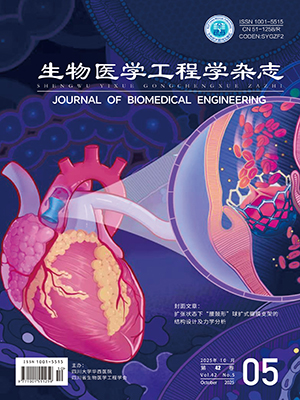With the rising incidence of breast cancer among women, neoadjuvant chemotherapy (NAC) is becoming increasingly crucial as a preoperative treatment modality, enabling tumor downstaging and volume reduction. However, its efficacy varies significantly among patients, underscoring the importance of predicting pathological complete response (pCR) following NAC. Early research relied on statistical methods to integrate clinical data for predicting treatment outcomes. With the advent of artificial intelligence (AI), traditional machine learning approaches were subsequently employed for efficacy prediction. Deep learning emerged to dominate this field, and demonstrated the capability to automatically extract imaging features and integrate multimodal data for pCR prediction. This review comprehensively examined the applications and limitations of these three methodologies in predicting breast cancer pCR. Future efforts must prioritize the development of superior predictive models to achieve precise predictions, integrate them into clinical workflows, enhance patient care, and ultimately improve therapeutic outcomes and quality of life.
Citation:
HE Sunwei, LI Xiujuan, XIE Yuanzhong, HOU Jixue, HAN Baosan, NIE Shengdong. Artificial intelligence in predicting pathological complete response to neoadjuvant chemotherapy for breast cancer: current advances and challenges. Journal of Biomedical Engineering, 2025, 42(5): 1076-1084. doi: 10.7507/1001-5515.202503075
Copy
Copyright © the editorial department of Journal of Biomedical Engineering of West China Medical Publisher. All rights reserved
| 1. |
|
| 2. |
|
| 3. |
|
| 4. |
|
| 5. |
|
| 6. |
|
| 7. |
|
| 8. |
|
| 9. |
|
| 10. |
|
| 11. |
|
| 12. |
|
| 13. |
|
| 14. |
|
| 15. |
|
| 16. |
Zhou Z, Adrada B E, Candelaria R P, et al. Predicting pathological complete response to neoadjuvant systemic therapy for triple-negative breast cancers using deep learning on multiparametric MRIs// 2023 45th Annual International Conference of the IEEE Engineering in Medicine & Biology Society (EMBC). Sydney: IEEE, 2023: 1-4.
|
| 17. |
|
| 18. |
|
| 19. |
|
| 20. |
Gao Y, Tan T, Wang X, et al. Multi-modal longitudinal representation learning for predicting neoadjuvant therapy response in breast cancer treatment. IEEE J Biomed Health Inform, 2025. DOI: 10.1109/JBHI.2025.3540574.
|
| 21. |
|
| 22. |
|
| 23. |
|
| 24. |
|
| 25. |
|
| 26. |
|
| 27. |
|
| 28. |
|
| 29. |
|
| 30. |
|
| 31. |
|
| 32. |
Chtouki K, Rhanoui M, Mikram M, et al. Supervised machine learning for breast cancer risk factors analysis and survival prediction// International Conference On Big Data and Internet of Things. Cham: Springer International Publishing, 2022: 59-71.
|
| 33. |
|
| 34. |
|
| 35. |
|
| 36. |
|
| 37. |
|
| 38. |
Arledge C A, Zhao A H, Topaloglu U, et al. Dynamic contrast enhanced MRI mapping of vascular permeability for evaluation of breast cancer neoadjuvant chemotherapy response using image-to-image conditional generative adversarial networks. medRxiv, 2024: 2024.09.04.24313070.
|
| 39. |
|
| 40. |
|
| 41. |
|
| 42. |
|
| 43. |
|
| 44. |
|
| 45. |
|
| 46. |
|
| 47. |
|
| 48. |
|
| 49. |
|
| 50. |
|
| 51. |
|
- 1.
- 2.
- 3.
- 4.
- 5.
- 6.
- 7.
- 8.
- 9.
- 10.
- 11.
- 12.
- 13.
- 14.
- 15.
- 16. Zhou Z, Adrada B E, Candelaria R P, et al. Predicting pathological complete response to neoadjuvant systemic therapy for triple-negative breast cancers using deep learning on multiparametric MRIs// 2023 45th Annual International Conference of the IEEE Engineering in Medicine & Biology Society (EMBC). Sydney: IEEE, 2023: 1-4.
- 17.
- 18.
- 19.
- 20. Gao Y, Tan T, Wang X, et al. Multi-modal longitudinal representation learning for predicting neoadjuvant therapy response in breast cancer treatment. IEEE J Biomed Health Inform, 2025. DOI: 10.1109/JBHI.2025.3540574.
- 21.
- 22.
- 23.
- 24.
- 25.
- 26.
- 27.
- 28.
- 29.
- 30.
- 31.
- 32. Chtouki K, Rhanoui M, Mikram M, et al. Supervised machine learning for breast cancer risk factors analysis and survival prediction// International Conference On Big Data and Internet of Things. Cham: Springer International Publishing, 2022: 59-71.
- 33.
- 34.
- 35.
- 36.
- 37.
- 38. Arledge C A, Zhao A H, Topaloglu U, et al. Dynamic contrast enhanced MRI mapping of vascular permeability for evaluation of breast cancer neoadjuvant chemotherapy response using image-to-image conditional generative adversarial networks. medRxiv, 2024: 2024.09.04.24313070.
- 39.
- 40.
- 41.
- 42.
- 43.
- 44.
- 45.
- 46.
- 47.
- 48.
- 49.
- 50.
- 51.




